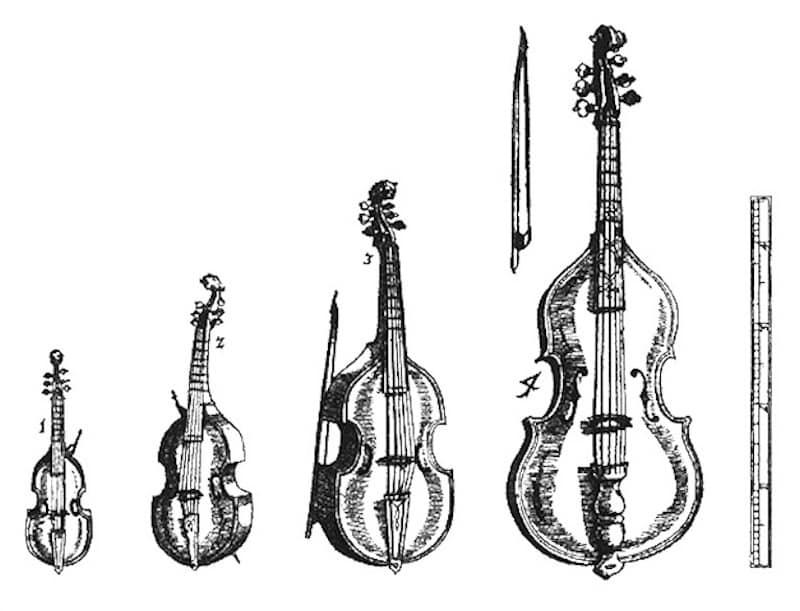One of the recognizable orchestral instruments, the double bass, is a legendary stringed instrument that’s been around for centuries. It’s also one of the most popular instruments to learn, considered slightly easier than smaller stringed instruments like the violin.
Even if you think you know all there is to know about the double bass, there is a ton of information that you might find surprising. Whether you already play the double bass or are looking to get started, here are some fun facts about the double bass that you may not know.
1. The Double Bass is a (very) Big Instrument
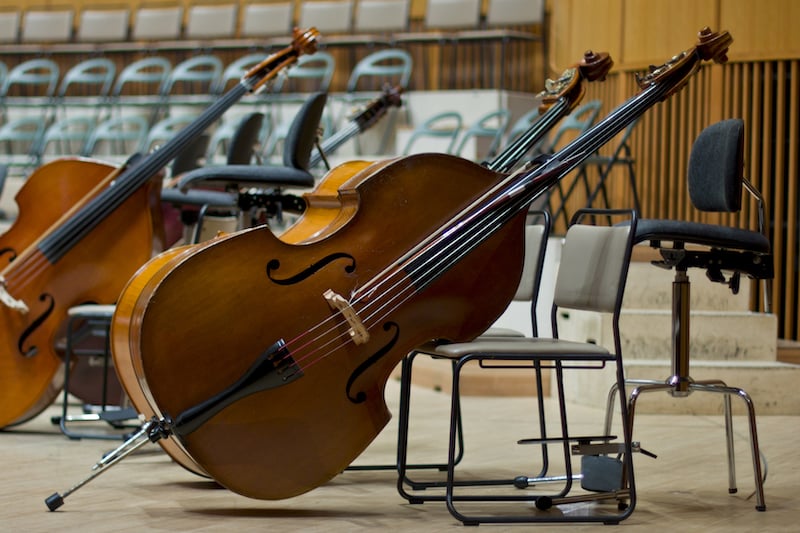
While most stringed instruments are relatively manageable to hold, the double bass is quite a bit larger.
It’s the largest bowed/plucked instrument in an orchestral line-up, meaning there are no bigger instruments that require a bow or finger plucking to play.
As a result, double bass players often have some of the biggest muscles in the orchestra.
2. The Double Bass Goes by Other Names
While the double bass is the official title for this instrument in most cases, it also has a few other names that you might hear it called occasionally.
Orchestral members often call the double bass simply the bass.
However, you might also hear composers and musicians refer to it as the contrabass, the string bass, the upright bass, bass fiddle, stand up bass, or the bull fiddle.
If you hear any of these names, it’s most likely that they are referring to the double bass.
3. The Double Bass Isn’t Just for Orchestral Music
The double bass is probably one of the most versatile instruments in an orchestral lineup simply for the fact that you’ll find it in a lot of other genres of music.
The double bass is common in jazz bands, rockabilly, blues, swing music, rock, bluegrass, country music, tango, and many more.
It’s one of the most flexible instruments available, and musicians across the spectrum value it highly.
4. The Largest Double-Bass Was Absolutely Enormous
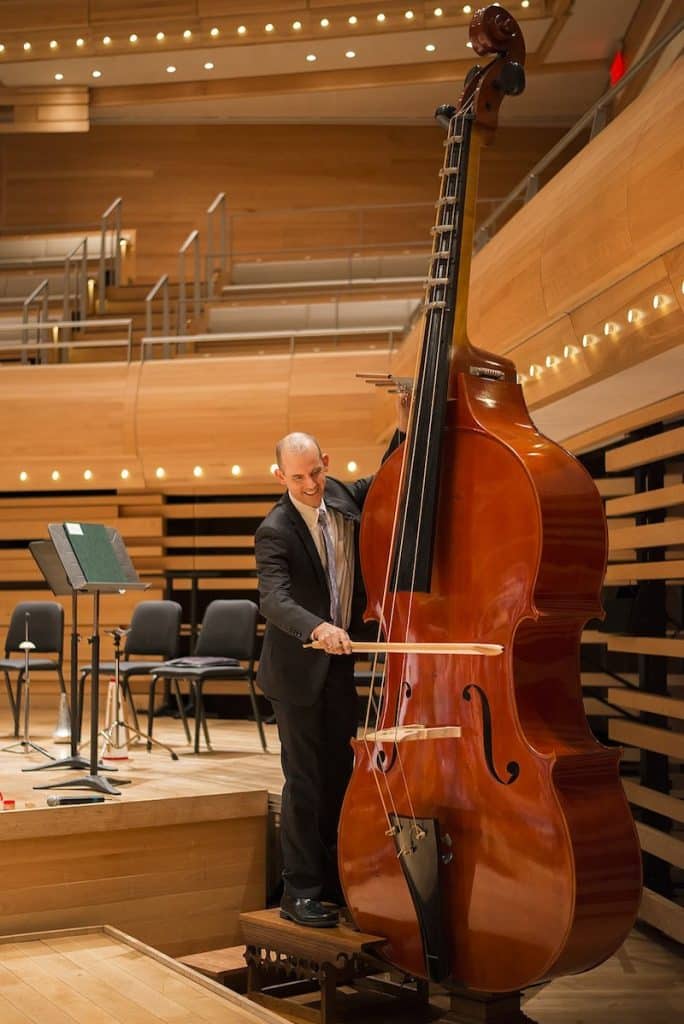
While the double bass is already pretty a big instrument, it wasn’t quite big enough for some.
Built by Erwin Lustenberger in 2006, the largest double-bass to ever be constructed was called an Octobass and was over 18-feet tall and 7-feet wide!
While it certainly isn’t practical to play, that double bass must be a sight to behold!
5. There are Two Main Designs for the Double Bass
The double bass is modeled after the viol which was the predecessor to the modern violin.
It’s essentially just a much larger version of the instrument playing at a lower pitch.
You’ll typically find these two main variations, although specialty instrument makers might have a few unique designs up their sleeves.
6. It Usually has Four Strings, but not Always
If you’ve ever seen an orchestral double bass, it most likely had four strings pitched to E–A–D–G.
However, you may also find a double bass with five strings with a fifth string added to the higher register.
This allows the musician to play higher notes than they can with just four strings.
7. Some Basses Have an Extension
Instead of adding a fifth string, musicians will have an extension added to their bass to allow them to play even lower!
These extensions allow the musician to extend the length of the low E string so that they can play lowered pitched notes. Typically extensions go as low as C!
8. Double Basses Are Made From Wood, But It Depends Which Type
The bodies of orchestral and concert double basses are most commonly made from strong, durable wood like maple or spruce.
The fingerboard is typically made of ebony, perfect for fingering and bowing, and the ideal tensile strength for extended playing.
However, bluegrass, rockabilly, psychobilly, or blues bassists prefer basses with plywood laminate tops and backs to craft their unique sound.
9. The Double Bass Isn’t as Loud as you Might Think
The double bass is so big that it’s no surprise you might think it’s also louder than other stringed instruments.
However, the opposite is actually true.
Because of its body size and low tuning, the double bass is one of the quietest stringed instruments in any orchestral lineup.
The human ear doesn’t pick it up as easily as, say, a violin.
As a result, the double bass is a super popular high school band instrument because players don’t have to worry so much about their parent’s eardrums all the time.
10. Orchestras Need More Than One Bassist
The double bass is one of the standard orchestra instruments you’ll find in any self-respecting orchestral lineup.
In order to produce the symphonies and harmonies necessary for a proper orchestra or concert performance, the conductor needs to have a double bass player on hand.
But, since double basses are so quiet, orchestras need anywhere between four and eight bassists in the string section.
Otherwise, no one in the audience can hear them play, and the music comes across as flat, missing something integral to the piece.
Bass solos do happen, but the player needs more microphones than other soloists playing higher-pitched instruments.
11. Origin of the Double Bass is Shrouded in Mystery
It isn’t clear who exactly was the first one to build a double-bass, but whoever it was, they didn’t do it alone.
The double bass is thought to have originated as a direct descendent of other 15th-century renaissance stringed instruments in the viol and violin families.
As a result, whoever invented the double-bass simply adapted designs for larger viols into the double-bass form.
12. The Earliest Double Bass Work Has Been Lost to Time
Although it’s known that Joseph Haydn wrote the earliest concerto composed for the double bass in 1763, it’s unknown what the piece actually sounded like.
Unfortunately, it was stored in the Eisenstadt library in Austria, the site of many wars and invasions that saw the library burned to ashes, along with Haydn’s work.
Despite the earliest work being lost to a tragic fire, the earliest existing double bass concerto was written by Carl Ditters von Dittersdorf, an accomplished Austrian composer in the 18th-century.
He was also a friend to Joseph Haydn and, notably, Mozart himself.
13. The Double Bass Gave Rise to the Modern Bass Guitar
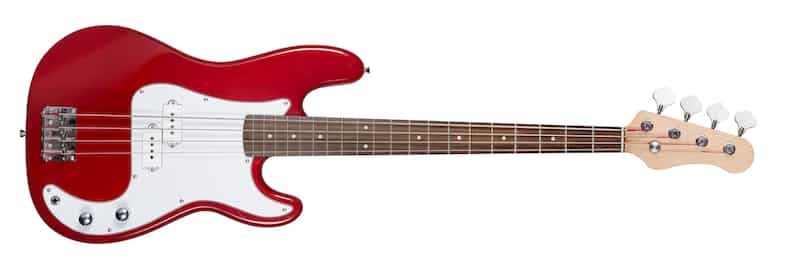
Invented by Paul Tutmarc in the 1930s the first bass guitar was advertised as a portable, lighter, and cheaper version of the upright double bass.
This version of the bass was particularly appealing to the many traveling bluegrass and dance bands of the time.
Within a short period, the bass guitar had overtaken the double bass in popularity by a large margin.
14. The Name “Double Bass” Isn’t as Clever as you Might Think
Although you wouldn’t be wrong to assume “double bass” has some sort of double meaning, you’d be mistaken.
The English name seems to have derived simply from the fact that it’s twice as long as a cello, hence the name “double.”
However, it could also be because composers wrote parts for the double bass that were essentially cello parts but one octave lower.
The double bass actually sounds one octave lower than the notes it reads.
15. The Knob at the Top of a Double Bass Is Called the Scroll
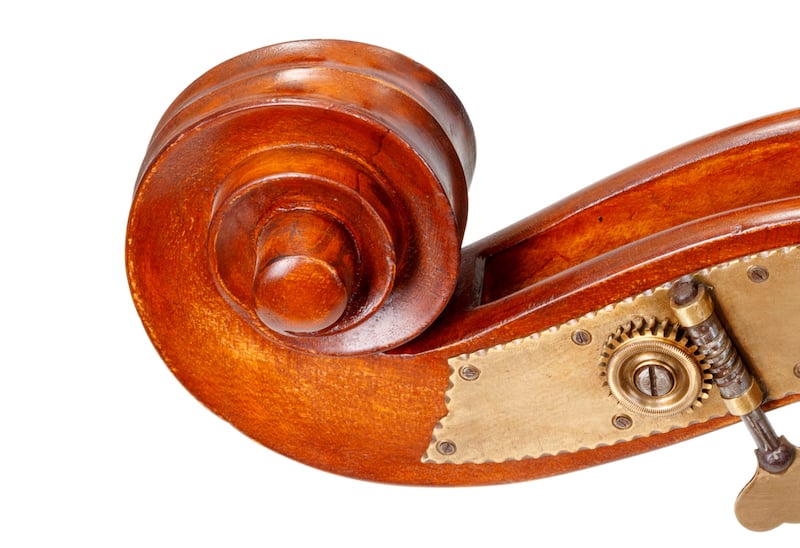
Ever wondered what that weird swirly thing on the top of a double bass is called?
So do most people, so you’re definitely not alone.
While the important part with the tuning keys is called the head or headstock, the swirly part on the top is called the “scroll.”
This is because it looks like a scroll used to record text hundreds of years ago before books.
It was a way for the instrument maker to show off their skills and lots of instruments would also have human or animals heads as well.
16. If it Weren’t for Intestines, We Wouldn’t Have the Double Bass
In the early 17th century, double bass strings were extremely hard to make.
Like other early string instruments, they made strings from animals guts but due to the thickness of the strings for a double bass they were especially difficult to maintain, and replacing them was prohibitively expensive for most musicians at the time.
As a result, usage of the double bass waned.
However, the development of overwound gut strings made from the intestines of cattle or sheep made it much more affordable and saved the double bass most likely.
17. Double Bass Players Have Two Kinds of Bows
Depending on what type of music a double bassist plays, they might play with their fingers (pizzicato) or they might play with a bow (arco).
But, there are actually two different types of bow depending on how the bassist holds their bow:
There are two main types of bows: French-style and German-style.
The German-style is older, and proponents say they can put more bodyweight on the strings.
French-style users, on the other hand, say their bow is much more maneuverable.
You decide which one is best for you!
18. There are Many Famous Double Bass Players
While the double bass scene is filled with talented players from all walks of life, there are quite a few who stand out from the crowd.
The most famous double bass players are extraordinarily skilled, playing concert halls and venues around the world for the global elite.
The top two players alive today are Edgar Meyer and Esperanza Spalding, both incredibly adept at playing the double bass with numerous awards between them.
Wrapping Up Our Fun Double Bass Facts
That’s all for our list of fun double bass facts.
We hope you learned something new or are now inspired to pick up the double bass and start learning this fantastic instrument.
Let us know below if you have any fun facts about the double bass that we forgot to include!

